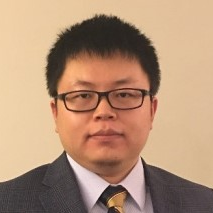Additive Manufacturing of Ceramic-based Materials
A special issue of Ceramics (ISSN 2571-6131).
Deadline for manuscript submissions: closed (31 December 2021) | Viewed by 3915
Special Issue Editors
Interests: additive manufacturing; laser processing; multifunctional composites; transparent ceramics; ceramic composites; modeling; machining; processing-microstructure-property relationships
Special Issues, Collections and Topics in MDPI journals
Interests: additive manufacturing of extreme materials; smart manufacturing; sustainable manufacturing
Special Issues, Collections and Topics in MDPI journals
Interests: advanced manufacturing and materials design; metals and piezoelectric composites; computational materials; mechanics; energy systems
Special Issues, Collections and Topics in MDPI journals
Special Issue Information
Dear Colleagues,
The widespread use of advanced ceramic-based materials depends on the availability of industrial processing routes to fabricate parts with required geometries. Additive manufacturing (AM) or 3D printing is a fast-growing technique for fabricating parts layer-by-layer directly from 3D digital models. AM has tremendous potential for producing high-value, complex, individually customized parts. As technological progress continues in the field, it can be expected that AM technologies will have an extraordinary impact on the industrial production of ceramic components, and will open up new possibilities for ceramics uses and markets.
Ceramic AM also poses some challenges compared to polymers and metals. Process-induced part warping and cracking and less-than-desired properties cannot be fully controlled. In addition, the properties of the ceramic and ceramic composite parts exhibit a wide variability because of undesired flaws or large porosity, thereby adding great difficulties in consistently producing high-quality components with minimal experimental trials and errors.
This Special Issue will highlight recent advances in the additive manufacturing of ceramic-based materials. Full-length research articles, reviews, and short communications are encouraged. The topics of interest include but are not limited to:
- Established ceramic AM techniques, such as sheet lamination, powder bed fusion, directed energy deposition, material jetting, binder jetting, and material extrusion;
- Hybrid ceramic AM processes, and novel approaches;
- Computational and experimental investigations of process–microstructure–property relations, including but not limited to multi-scale multi-physics modeling, as well as in-situ and ex-situ characterization of grain structures, porosity, surface roughness, structural and functional properties for AM-fabricated ceramics and ceramics composites;
- Data-driven process optimization and quality control of AM ceramic-based components (e.g., based on surrogate models, uncertainty quantification, machine learning and deep learning technologies);
- Multi-material additive manufacturing, such as ceramic–metal composites, ceramic matrix composites, and functionally graded ceramics;
- Novel applications of AM ceramic-based components.
Dr. Xiangyang Dong
Dr. Xuan Song
Dr. Lei Chen
Guest Editors
Manuscript Submission Information
Manuscripts should be submitted online at www.mdpi.com by registering and logging in to this website. Once you are registered, click here to go to the submission form. Manuscripts can be submitted until the deadline. All submissions that pass pre-check are peer-reviewed. Accepted papers will be published continuously in the journal (as soon as accepted) and will be listed together on the special issue website. Research articles, review articles as well as short communications are invited. For planned papers, a title and short abstract (about 100 words) can be sent to the Editorial Office for announcement on this website.
Submitted manuscripts should not have been published previously, nor be under consideration for publication elsewhere (except conference proceedings papers). All manuscripts are thoroughly refereed through a single-blind peer-review process. A guide for authors and other relevant information for submission of manuscripts is available on the Instructions for Authors page. Ceramics is an international peer-reviewed open access quarterly journal published by MDPI.
Please visit the Instructions for Authors page before submitting a manuscript. The Article Processing Charge (APC) for publication in this open access journal is 1600 CHF (Swiss Francs). Submitted papers should be well formatted and use good English. Authors may use MDPI's English editing service prior to publication or during author revisions.
Keywords
- additive manufacturing
- computational modeling
- experimental characterization
- in-situ monitoring
- feedstock preparation
- postprocessing
- ceramic-based materials
- applications







